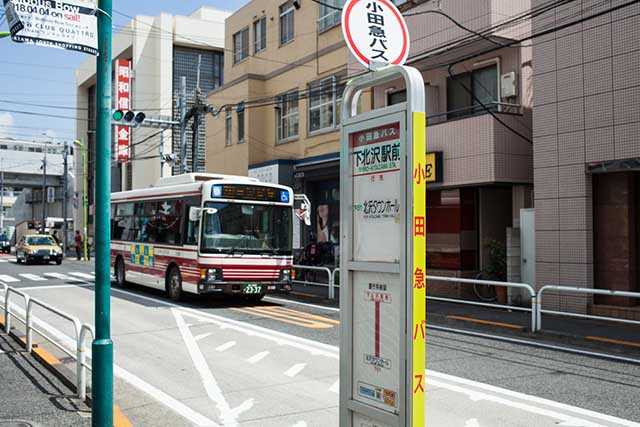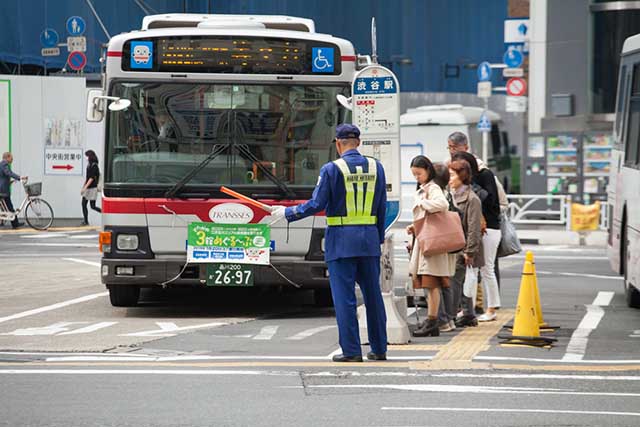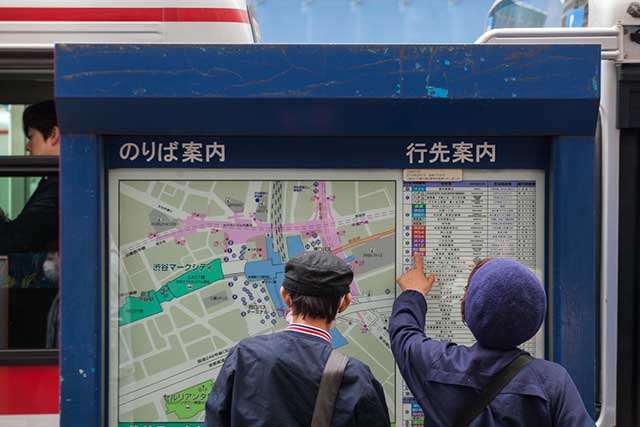
While the train is the most common form of transportation in Tokyo, the bus is better equipped for shorter distances and places off the beaten path. Heavy in kanji and Japanese speaking conductors, the bus is at first intimidating but becomes easier once the basics are understood.
-
01
How to pay
![How to pay]()
How to pay
The bus accepts either IC card or cash. The cash must be in exact change and notes must be broken into coins during the bus ride. Be sure to break that note while the bus is running to avoid delays when paying. If paying in cash be sure to grab a ticket when entering the bus and turn it in with the bus driver at the end of the trip. If paying using an IC card just tap the card onto the card reader when entering and exiting. Occasionally, some buses in sightseeing areas charge a flat fee, normally around 200 yen. Be sure to check the screen above the driver for the appropriate amount.
-
02
Queuing and Etiquette
![Queuing and Etiquette]()
Queuing and Etiquette
Japanese bus riders are polite and form a proper queue before entering the bus. The bus is always entered from the rear door and exited from the front door closest to the driver. The front of the bus is normally reserved for the handicapped, elderly and pregnant women while the back of the bus is for the general public. Always offer seats to the special needs passengers first. Just like the trains, the bus can get quite crowded during rush hour, from 8AM-9AM for the morning and after 5PM in the evening. Be sure to hold the handle as the bus can get shaky. Walking is discouraged but it is common to see people walking to the front of the bus to get change.
-
03
Stopping at the destination
![Stopping at the destination]()
Stopping at the destination
Depending on the bus, the driver might not stop at every listed stop. Be sure to press the stop button before the destination to make sure the driver knows. The buttons are everywhere, either next to the seats on the walls or on poles.
The timetable is listed outside the bus stop. Generally, the buses are on time or just a few minutes delayed. Times differ from weekdays to weekends to public holidays so be sure to check the appropriate time for the day. The buses don't run as often as the trains. The trains normally run every few minutes while the buses only run four to five times per hour, sometimes even less. Be sure to check the timetable outside to find the best time to return. -
04
Which bus to take?
![Which bus to take?]()
Which bus to take?
Unlike the trains and their identifying colors, all of the buses look the same. It is easy to accidentally board the wrong bus so double check either the front or side of the bus that has the destination listed in English next to the kanji. Multiple buses tend to stop at the same stop so make sure it is correct before boarding. The easiest way to remember a bus is by its number. Each bus gets assigned a number and the timetable or map outside the station has a list of each bus, their number and their destination.
![Which bus to take?]()
Which bus to take?
Major bus stations are normally found directly outside of train stations. The train station will have a large map explaining which bus is lodged at which dock. So if the kanji or destination name is too difficult, just jot down the number for an easier use.
The Tokyo Station Hotel
1-9-1 Marunouchi, Chiyoda-ku Tokyo

-






 Go here
Go here










